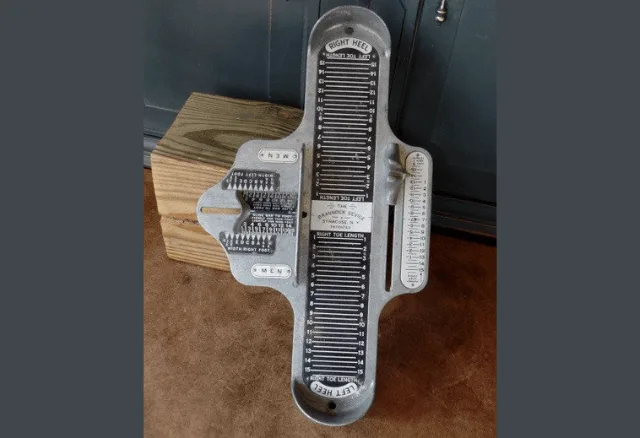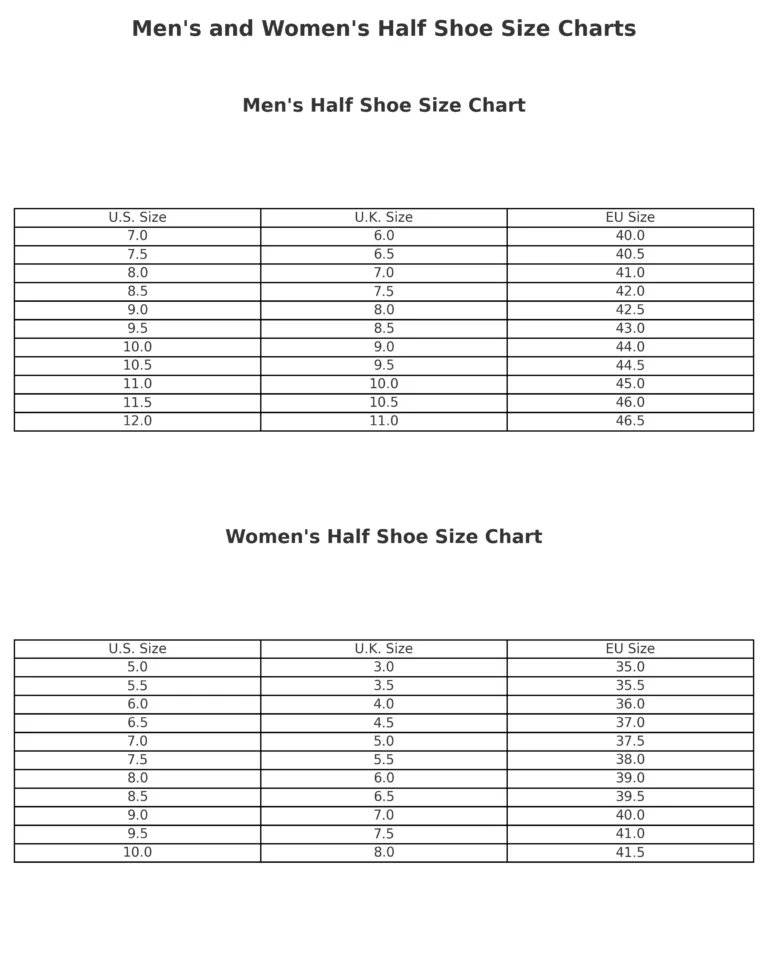How Much Difference In Half Shoe Size

Knowing the shoe size is important to get the fitting shoes for your feet. This article covers the How Much Difference In Half Shoe Size, as well as some other information to help you find the right shoe.
There are basically seven major shoe sizing systems worldwide, with the US, British, European, and Japanese sizing systems being the most common around the world. However, half-size increments are only available in the United States and the United Kingdom. That’s a half-size difference of about ⅛” or 4.23 mm. This difference varies by gender, such as half a shoe size for women being 0.5 cm, while for men, it is 0.4 cm. Remember that half-size shoes are not wider; they are slightly longer than the full size below.
Major Shoe Sizing Systems
Shoe Sizing
Shoe size measurements are usually based on foot length and width, with different regions adopting different size standards. The most common sizing systems are U.S., U.K., and the European system.
In the U.S. sizing system, widely used around the world, this system only produces half sizes from full sizes, about one-sixth of an inch (about 4.23 mm). A shoe half size is considered insignificant by many, but in reality, it has a significant impact on foot comfort, support, and foot health.

Notes:
EU sizes typically don’t have half sizes but can accommodate minor fit adjustments.
U.S. men’s sizes are generally 1.5 sizes larger than women’s sizes (e.g., men’s 7 = women’s 8.5).
For the best fit, always check the brand-specific size guide, as sizing can vary.
Effect of half Shoe Size
One of the noticeable differences when using a shoe half size larger or smaller is the fit of the shoe. Shoes that are half a size small can cramp your toes, causing discomfort and foot pain. Conversely, oversized shoes will cause your feet to slip inside the shoe while walking, which causes instability. Considering a difference of only half a size can solve these problems or exacerbate the problem.
Shoes that are too tight can cause problems like corns and calluses by putting extra pressure on certain parts of the foot. Again, loose shoes fail to provide adequate support during activity and can cause problems such as plantar fasciitis or tendinitis. Therefore, shoes that affect the health of the feet must be avoided.
Just as the right pair of shoes can improve your performance, the wrong pair of shoes or the wrong size can negatively impact your performance. If you want comfort and support for activities ranging from exercising, jogging, or casual walking to hiking, you should pay attention to the right shoe size.
Along with foot health, a pair of right-sized shoes also affects your style. Oversized shoes look incongruous with your outfit and distort your gait. Small-sized shoes, on the other hand, make you uncomfortable; the toes swell up over the shoe, and the foot tries to slip out of the shoe. These shoes are short-lived and are just a waste of money.
Reasons for Sizing
Different types of shoes fit the same size but take different forms; for example, a sneaker may fit snugly due to its design, while a dress shoe may have a roomier fit. This is because materials, such as leather versus synthetic fabrics, can affect fit. Leather, for example, tends to stretch over time, so some people choose a half-size smaller shoe in leather shoes, hoping it will stretch over time.
The materials used in the shoe vary significantly between brands, due to which size 8 becomes smaller to 7.5 or bigger to 8.5. So, we recommend trying different brands of shoes and reading shoe or brand reviews and sizing specifications before making a purchase.
How to Find the Right Fitting Shoe
Our feet bear the stress of the body throughout the day and swell in the afternoon. So, shop for shoes in the afternoon or measure your feet then to get the right fit for your feet.
Wear both shoes and walk around the store to determine if your shoes need a half size smaller or larger. If you want comfort and support, then this pair is for you. And if you realize that your feet are cramped, as in there is not enough space in front of the toe and not a single toe space behind the heel, then avoid this kind of shoe.
Focus on your activity when choosing your shoes. Different brands make shoes for different activities, like exercise shoes, running shoes, standing-all-day shoes, arch shoes, etc.